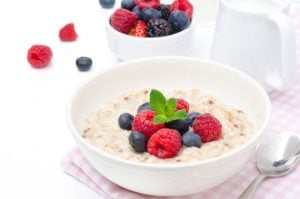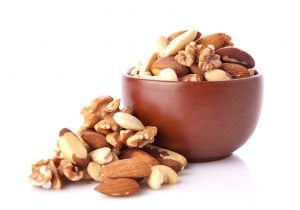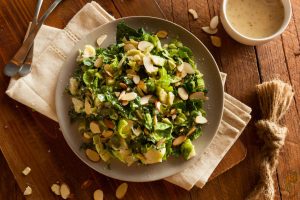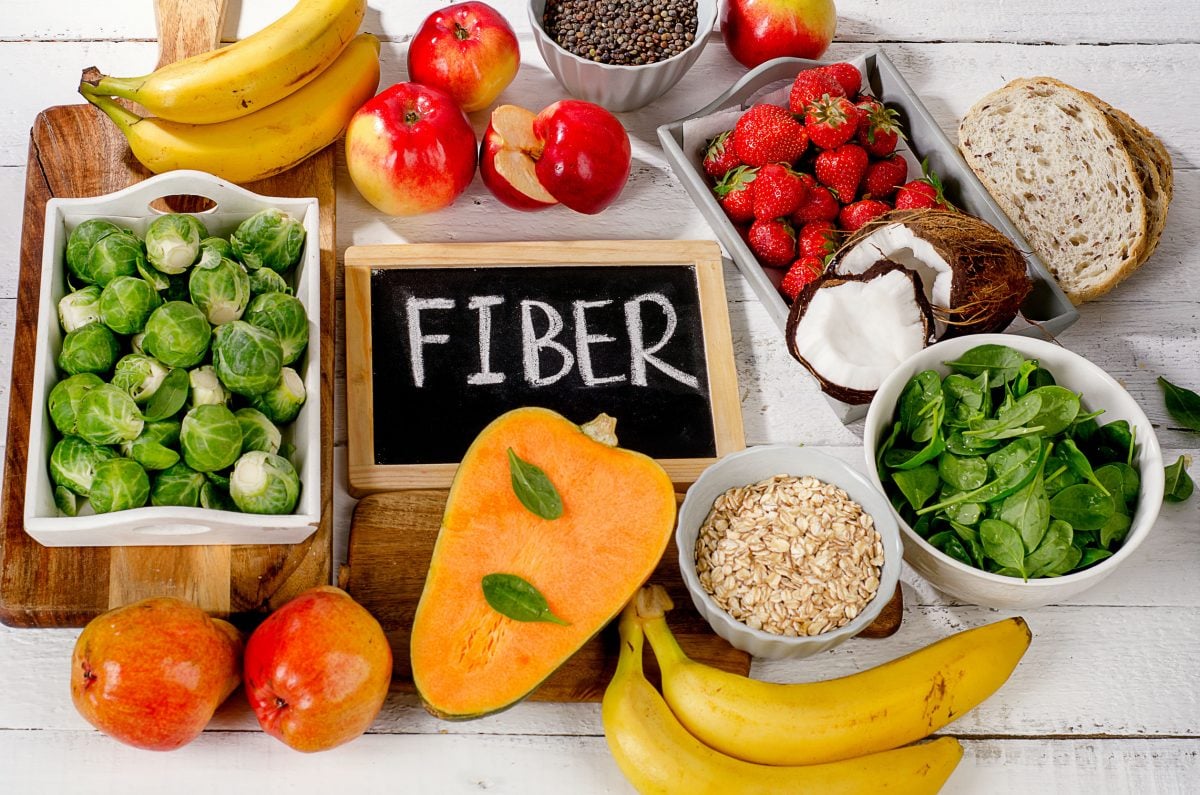You probably know that fiber is good for you. But are you getting enough of it every day? A high-fiber diet can enrich your health in many ways, so this should be a priority.
And the best part? Increasing fiber in your diet doesn’t mean nixing other foods you already eat and love. It just means adding more fiber-rich, satisfying foods to your plate.
Here’s some basic information on the different types of fiber, and some of the veggies that are excellent sources.
Fiber 101
Fiber is found in a wide variety of grains, fruits, vegetables, and legumes. Dietary fiber not only helps to prevent constipation, it’s also believed to play a role in helping to reduce the chances of developing health issues related to high levels of sugar in the blood or cardiovascular problems.1 If you’ve ever heard of the term “roughage,” that refers to dietary fiber.
There are two main kinds of fiber – soluble fiber and insoluble fiber. Each has unique health benefits, and each is important to include in your diet.
· Soluble fiber
 As the name implies, soluble fiber breaks down when it comes into contact with water. It actually turns into a substance that resembles a gel. Soluble fiber, which helps lower cholesterol as well as glucose, is found in many vegetables, as well as oats and citrus fruits.2
As the name implies, soluble fiber breaks down when it comes into contact with water. It actually turns into a substance that resembles a gel. Soluble fiber, which helps lower cholesterol as well as glucose, is found in many vegetables, as well as oats and citrus fruits.2
· Insoluble Fiber
 This form of fiber is very important to the digestive process because it aids in the movement of waste through your gastrointestinal tract so that it can ultimately be expelled from the body. Insoluble fiber is also found in many vegetables, as well as wheat and nuts.
This form of fiber is very important to the digestive process because it aids in the movement of waste through your gastrointestinal tract so that it can ultimately be expelled from the body. Insoluble fiber is also found in many vegetables, as well as wheat and nuts.
Finding a Good Source of Fiber
One of the best ways to ensure you get enough fiber in your diet is to make sure you eat plenty of vegetables on a regular basis. Here are just a few of the fiber-rich vegetables you should make a part of your dietary regimen.
Carrots
There’s a reason Bugs Bunny craves carrots. Not only are they great for your vision, they also provide about 5 grams of fiber per one-cup serving. Carrots also help make sure your blood glucose levels remain in check.3
Eggplant
This vegetable is best known for its purple color, but there’s a lot more to eggplant than just its looks. Just one cup of eggplant delivers 2 grams of fiber, and the vegetable contains vitamins B and K, as well as magnesium and potassium.4 Eggplant also contains copper, which plays a key role in the production of red blood cells.5
Pumpkin
 Pumpkin often takes center stage at Thanksgiving, but it’s a year-round fiber star. It provides about 2 grams of fiber in a one-cup serving, and it also has a lot of potassium.6 This is a mineral that helps strengthen bones and keeps your heart working as it should.7
Pumpkin often takes center stage at Thanksgiving, but it’s a year-round fiber star. It provides about 2 grams of fiber in a one-cup serving, and it also has a lot of potassium.6 This is a mineral that helps strengthen bones and keeps your heart working as it should.7
Celery
If any vegetable is a good representation of what fiber should look like, it’s celery. Eating just 1 stalk of celery will provide you with 1 gram of fiber. And you’ll only be taking in about six calories. Celery is also a great way to stay hydrated, because it contains a great deal of water.8
Cabbage
Not only is cabbage the main component of coleslaw, it also provides nearly 3 grams of fiber in a one-cup serving.9
Brussels sprouts
Brussels sprouts are high in vitamins A and C, as well as potassium, calcium, magnesium, and phosphorus. And just one cup of Brussels sprouts provides about 4 grams of fiber.10

How Much Fiber Do You Need?
Depending on whether you’re a man or woman, the amount of fiber you need each day will vary.
For example, women younger than 50 should get about 25 grams per day, while females 50 and over should strive to get about 21 grams. Men who are 50 and younger need about 38 grams per day, while men older than 50 need about 25 grams.11
As is the case with most things, however, too much fiber can cause issues.
Consuming an excessive amount of fiber could increase the chances of developing digestive problems, such as diarrhea, cramps, or bloating.
If you have too much fiber in your system, the food you eat will move through your digestive system too quickly. As a result, your body won’t have enough time to absorb the nutrients.12
The Bottom Line
Fiber offers incredible health benefits, and there’s a fair chance you’re not getting enough of it. But remember to start slowly, and gradually increase the amount of fiber you’re taking in. Also, drink plenty of water. Increasing your water intake as you increase your fiber intake can help regulate your digestive system.13
As you can see, getting enough fiber in your diet can yield tremendous benefits for your health and well-being. So heed the advice of a respected expert (my mother): “Remember to eat your vegetables!” And be sure to include the fiber “stars” listed above.
Learn More:
Benefits of Honey Lemon Water (And a Simple Recipe)
6 Easy Home Remedies to Stop Sneezing
Listen Up, Guys: Natural Ways to Enhance the Male Libido
Sources
1.http://www.mayoclinic.org/healthy-lifestyle/nutrition-and-healthy-eating/in-depth/fiber/art-20043983
2.https://www.mayoclinic.org/diseases-conditions/high-blood-cholesterol/in-depth/cholesterol/art-20045192
3.https://www.medicalnewstoday.com/articles/317225.php
4.http://nutritiondata.self.com/facts/vegetables-and-vegetable-products/2444/2
5.http://lpi.oregonstate.edu/mic/minerals/copper
6.http://nutritiondata.self.com/facts/vegetables-and-vegetable-products/2600/2
7.https://source.colostate.edu/potassium-good-for-heart-bones-and-muscles/
8.https://www.livescience.com/50640-celery-nutrition.html
9.https://ndb.nal.usda.gov/ndb/foods/show/2888?fgcd=&manu=&lfacet=&format=&count=&max=50&offset=&sort=default&order=asc&qlookup=af%3A%28++11109+%2Bcabbage+%29&ds=&qt=standard&qp=&qa=11109&qn=&q=cabbage&ing=
10.https://ndb.nal.usda.gov/ndb/foods/show/2879?manu=&fgcd=&ds=
11.https://www.everydayhealth.com/hs/guide-to-daily-fiber/too-much-fiber/
12.https://www.healthline.com/health/food-nutrition/too-much-fiber
13.https://www.ncbi.nlm.nih.gov/pubmed/9684123

Hey there! Someone in my Facebook group shared this website
with us so I came to give it a look. I’m definitely enjoying the information. I’m book-marking and will
be tweeting this to my followers! Superb blog and outstanding design and style.
asmr 0mniartist
You really make it seem so easy with your presentation but I find this matter to be actually
something which I think I would never understand. It seems too
complicated and very broad for me. I am looking forward for your next post, I will try to get the
hang of it! 0mniartist asmr